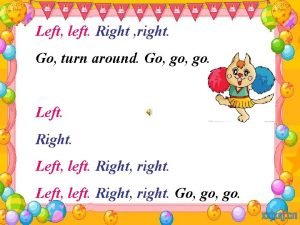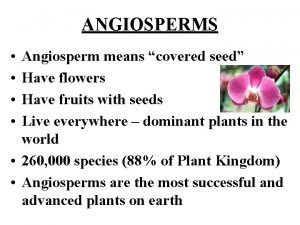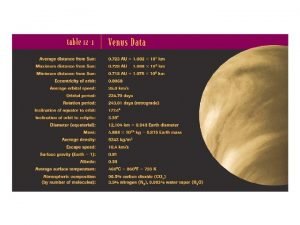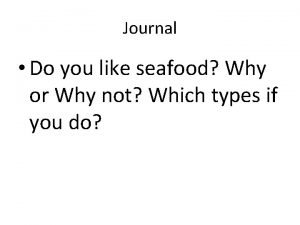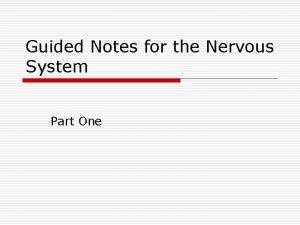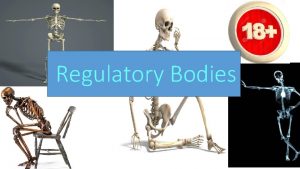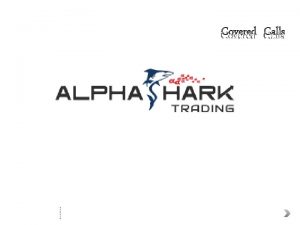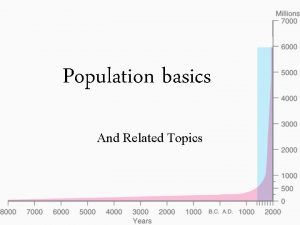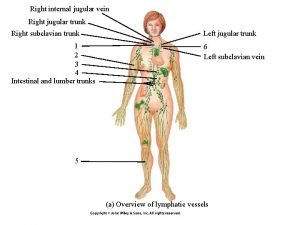Warmup Do right now Topics covered to this





































- Slides: 37

Warmup Do right now

Topics covered to this point • Avogadro’s Number • Mole • Molar Mass Going forward • Mole to mole conversion • Percent yield

Mole Relationships in Chemical Equations: Conservation of Mass • As a chemical reaction proceeds: – Reactants are consumed and new materials with new chemical properties are produced – Bonds are broken, formed, or atoms are rearranged which produces new substances – No material is lost or gained as original substances change to new substances

Mole Relationships in Chemical Equations: Conservation of Mass • Law of Conservation of Mass – Quantity of matter does not change during a chemical reaction – The sum of the masses of products is equal to the sum of masses of reactants – Atoms are neither created nor destroyed in chemical reactions

Mole Relationships in Chemical Equations: Conservation of Mass • A balanced equation has the same number of atoms on each side of the arrow 2 2

Information Available from a Balanced Chemical Equation • “ 1 mole of methane gas reacts with 2 moles of oxygen gas to produce 1 mole of carbon dioxide and 2 moles of water vapor. ” • Multiplying each of the molar masses by the coefficient will give the total mass of reactants and products

Information Available from a Balanced Chemical Equation • Balanced chemical equations tell us: –Relative number of atoms reacting and produced –Number can be in terms of single atoms, or moles of atoms 2

Mole-Mole Factors • In a balanced equation, conversion from moles of one substance to another will be determined by the values of the coefficients 2 • To determine how many moles of methanol would be produced if 0. 295 moles of hydrogen gas is consumed • Will require a mole to mole conversion • Converting the given mole amount of hydrogen gas to the needed mole amount of methanol

Mole-Mole Factors 2 • Coefficients of the balanced equation can be used to make ratios (conversion factors) between the different reactants and products

Mole-Mole Factors • Write all of the possible mole ratios for the following chemical equation 2 2

Using Mole-Mole Factors in Calculations • Calculations based on balanced equations require the use of mole to mole conversions – Equation must be balanced – Identify the known and needed substances – Make the conversion factor based on

Stoichiometry • Using mole ratios from a BALANCED chemical equation – Can convert moles of one compound to moles of another compound using the correct mole ratio grams B grams A MM of B Stoichiometry moles A Mole-moles factor B moles B

Using Mole-Mole Factors in Calculations: Calculating Moles of a Product • Calculate the moles of CO 2 formed when 4. 30 moles of C 3 H 8 reacts with (the required) 21. 5 moles of O 2 5 3 4 • Balance the equation • Plan to convert the given amount of moles to the needed amount of moles • Use coefficients to state the relationships and mole-mole factors • Set up the problem using the mole-mole factor and canceling units

Using Mole-Mole Factors in Calculations: Calculating Moles of a Product 5 Mole-mole factor Given: Mole-mole relation 1 mol C 3 H 8 = 3 mol CO 2 4 3 Needed: Mole-mole factor

Using Mole-Mole Factors in Calculations: Calculating Moles of a Product • Set up the problem using the mole-mole factor that cancels given moles and provides needed moles 5 Mole-mole factor 3 4

Mass Calculations for Reactions • From the balanced equation – It is also possible to start with a known mass of one substance – Then convert to moles of another substance – Start with a known amount of moles of a substance – Then convert to the sought mass of another substance

Mass Calculations • Convert the moles of one substance to moles of another substance • Find the mole-mole factor using the coefficients in the balanced equation – Ratios ONLY apply to moles, NOT grams – Convert grams to moles, then use mole ratio Mole-mole factor

Mass Calculations • You can only relate moles of two compounds – Ratios ONLY apply to moles, NOT grams – Convert grams to moles, then use mole ratio

Mass Calculations For Reactions: Mass of Product from Mass of Reactant • What mass of carbon dioxide is produced when 96. 1 g of propane react with sufficient oxygen? 3 5 4 • Balance the equation • Plan to convert the given mass to given moles • Convert the given moles to needed moles by the use of mole-mole factor • Convert the needed moles to needed mass grams CO 2 grams C 3 H 8 MM of A MM of B Stoichiometry moles C 3 H 8 moles CO 2

Mass Calculations Example 1 • • Write the equalities 1 mol C 3 H 8 = 44. 09 g C 3 H 8 1 mol CO 2 = 44. 01 g CO 2 1 mol C 3 H 8 = 3 mol CO 2 to create mole-mole factor 5 Mass needed: g of CO 2 Given: 96. 1 g C 3 H 8 grams CO 2 grams C 3 H 8 MM of A 4 3 MM of B Stoichiometry moles C 3 H 8 moles A moles B moles CO 2

Mass Calculations Example 1 5 3 X g CO 2 4

Mass Calculations Example 2 • What mass of carbon monoxide and what mass of hydrogen are required to form 6. 0 kg of methanol by the following reaction: 2

Mass Calculations Example 2 2

Mass Calculations Example 2

Limiting Reactants • Chemical reactions with two or more reactants will continue until one of the reactants is used up • The reactant used up is called the limiting reactant (reagent) • This limits the amount of product that can be made

Reactions • In the lab, reactants do not always combine in exact mole ratios – Often reactions are run with more of one reactant than is needed (excess) • A reaction will continue until one of the reactants runs out – Reactant that runs out first is the Limiting Reactant

Calculating Moles of Product from a Limiting Reactant • To determine the limiting reactant between two reactants – Balance the equation – Determine the number of moles of each reactant – Calculate the number of moles of product that each of the reactants (moles) would produce – The reactant producing the least amount of product (moles) is the limiting reactant

Calculating Moles of Product from a Limiting Reactant • Determine the number of moles of product that each reactant can make –The smallest number is the MAXIMUM product you can make –The reactant that gives the smallest amount of product is the limiting reactant

Calculating Mass of Product from a Limiting Reactant 1) Balance the equation 2) Determine the amount of product that can be made by each reactant 3) Compare numbers § Reagent that gives the smaller number is limiting and that is the maximum amount of product that can be made

Limiting Reactant Problem • Lithium nitride, an ionic compound containing Li+ and N 3 - ions, is prepared by the reaction of lithium metal and nitrogen gas. Calculate the mass of lithium nitride formed from 56. 0 g of nitrogen gas and 56. 0 g of lithium metal. 6 2

Limiting Reactant Problem 3 6 Given: 56. 0 g Li Given: 56. 0 g N 2 Needed: g of Li 3 N Equalities and Conversion Factors 1 mol Li = 6. 941 g Li 1 mol N 2 = 28. 00 g N 2 Grams Li 3 N grams Li MM of Li 1 mol Li 3 N= 34. 83 g Li 3 N MM of Li 3 N Stoichiometry moles Li 3 N

Calculate the Limiting Reactant Limiting reactant 8. 07 mol Li 2. 69 mol Li 3 N 2. 00 mol N 2 4. 00 mol Li 3 N

Limiting Reactant Problem Lithium is the limiting reagent. Calculate the number of grams of lithium nitride formed in the reaction based on the limiting reactant: 2. 69 mol of lithium 93. 7 g Li 3 N

Product Yield • The calculated amount of product that should be obtained is called theoretical yield • Assumes all reactants are converted to product based on the mole-mole ratios of reactant to product • Rarely do you get the maximum amount of product – Side reactions – Loss during transfer – Accidental spills

Percent Yield • Theoretical Yield – The calculated amount of product • Actual Yield – The actual amount of product – Something less than theoretical • Percent Yield – The fraction of theoretical yield actually obtained is expressed as a percent

Percent Yield Example • In the previous limiting reactant problem, you actually produced 90. 8 g of Li 3 N. What is the percent yield of this reaction? 96. 9 % yield

• end
 Right product right place right time right price
Right product right place right time right price Right time right place right quantity right quality
Right time right place right quantity right quality What topics will be covered in this unit
What topics will be covered in this unit The right man on the right place at the right time
The right man on the right place at the right time Define:warmup
Define:warmup Warmup 65
Warmup 65 Warm rhyming words
Warm rhyming words Ethos warmup
Ethos warmup Gmass warmup
Gmass warmup Exponent properties
Exponent properties 65 mins
65 mins Tinman warm up
Tinman warm up Stratified warmup
Stratified warmup Java warmup
Java warmup Warmup ratio
Warmup ratio Warmup end
Warmup end Surface area warm up
Surface area warm up Now i see it now you don't
Now i see it now you don't Happen en presente continuo
Happen en presente continuo What forces are acting on you right now
What forces are acting on you right now Heres to right now
Heres to right now Go left left right right
Go left left right right You put your right foot in you put your right foot out
You put your right foot in you put your right foot out Left left right right go go go
Left left right right go go go How much of the earth's surface is covered with water
How much of the earth's surface is covered with water Warships covered with protective iron plates
Warships covered with protective iron plates Angiosperms
Angiosperms Schiaparelli
Schiaparelli Covered entity
Covered entity Pegi media aspects covered
Pegi media aspects covered Covered by firm shell and have segmented body
Covered by firm shell and have segmented body Covered interest arbitrage parity
Covered interest arbitrage parity Four living creatures covered with eyes
Four living creatures covered with eyes Nervous system guided notes
Nervous system guided notes Five major oceans
Five major oceans Broad sediment-covered continental shelves
Broad sediment-covered continental shelves Bbfc media aspects covered
Bbfc media aspects covered Butterfly strategy
Butterfly strategy





















